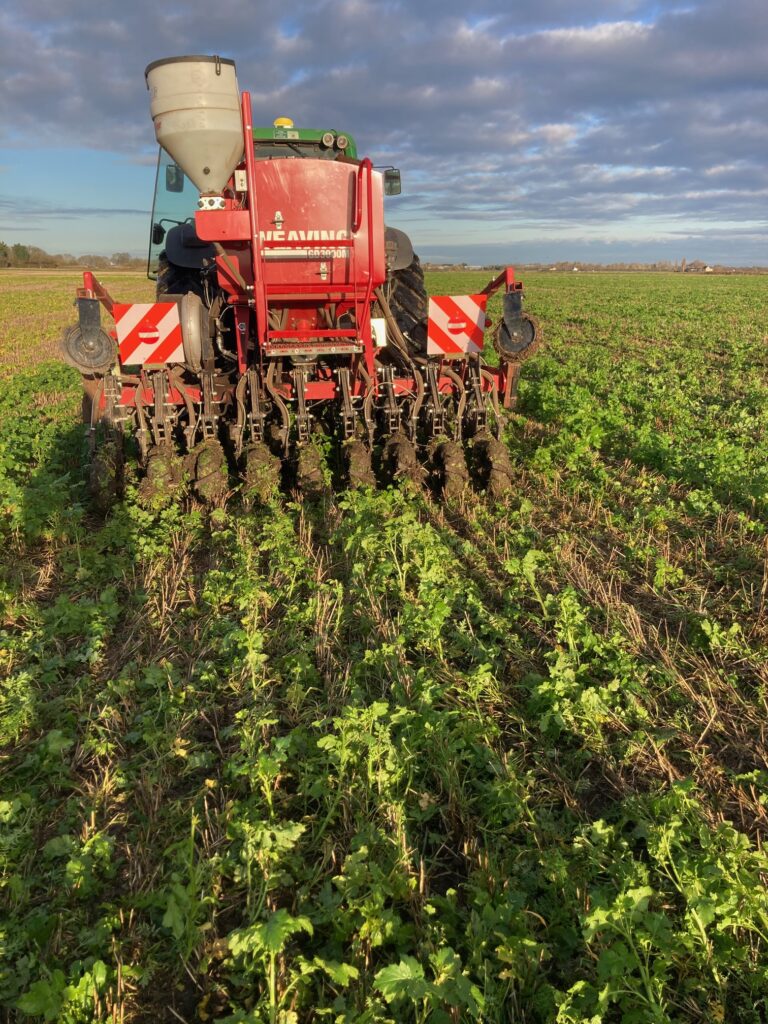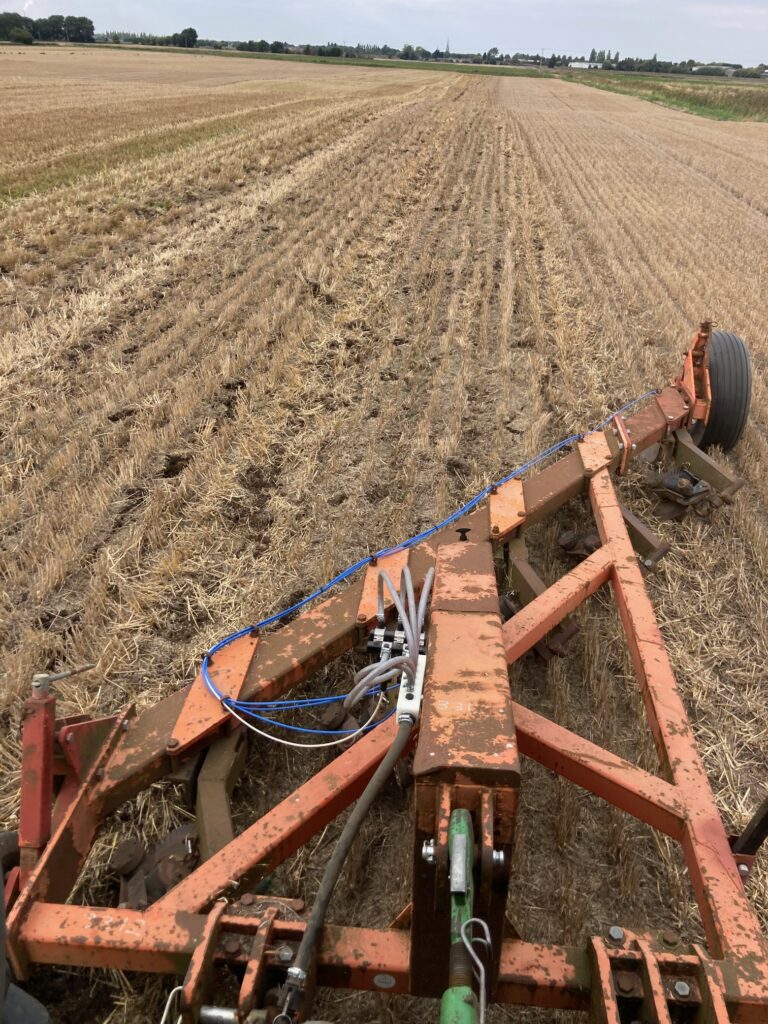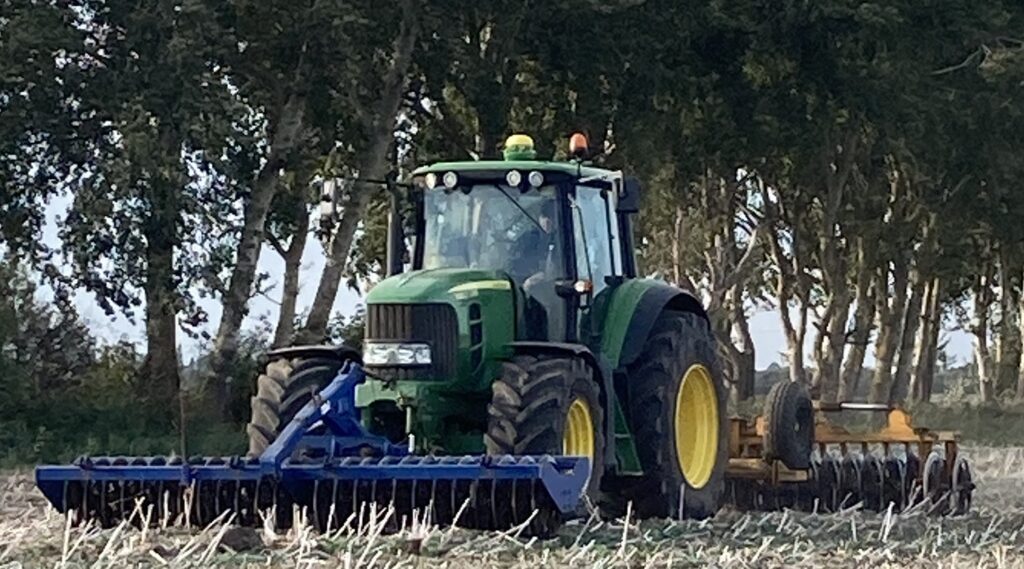April 2023
I ended my previous article noting that the inflation in costs, including a recent substantial rent rise, was increasing the risks associated with farming. The ongoing volatility since has reinforced that point. With this in mind, it seemed more important than ever to have the highest quality of establishment for our autumn sown crops so that they had the best possible start.
In September I paraplowed the land that wasn’t done last year, and then consolidated it with my old press rig that comprises a front mounted single press, and a trailed double press. We know the value of loosening soil when necessary, but it is essential here to then reconsolidate the soil properly. I hope that as our soil continues to improve, we will need less soil loosening, and most of the farm has only been done once in six years.
The paraplow, and both presses cost a combined £4000 and we don’t really wear metal out here on skirt fen, so the cost of this is sensible, and not too time demanding.
Our multi species catch crops between first and second wheat came surprisingly well and gave good ground cover and some important plant diversity. In October we established our first ever commercial crop of mustard with our GD drill. It went in nicely and had a timely rain. Emergence was good, it appeared to miss the Flea Beatle completely and went into winter looking well.
Unfortunately, my planned ‘Culture of Excellence’ with the remaining crop establishment was compromised by a huge amount of off farm work and activity in October and November, and I didn’t finish wheat drilling until December 9th, a month later than planned.
Happily, except for maybe 3 hectares of second wheat, the crops all came well, and I am pleased I stuck with the cropping plan, and it was satisfying driving across some nice-looking wheat applying a small dose of Liquid Nitrogen a few weeks ago.
Sadly, the fine looking mustard was mostly killed by the frosts in December and January and is being redrilled with a spring mustard crop. Apparently, most Winter Mustard crops survived the low temperatures, but locally a few have failed. We are low lying here, most of the farm is below sea level, and many sugar beet crops around us were also damaged by the hard frosts.
We have spring beans again this year, and they are following cover crops or over wintered stubble stewardship options. We have also got a small experiment with no nitrogen wheat for ourselves, and some winter barley trials we are growing for a seed breeder.
I had previously thought that our clover living mulch planted in August 2021 ahead of spring beans in 2022 had failed completely. Recently though, I discovered that there is some still growing, and starting to spread as hoped across the field. It is not consistent enough within the field sadly, so I expect to have a difficult decision to make if the field needs some broadleaf weed herbicides, but for now at least, it is still there.


I believe the principle of some sort of under story crop, ideally fixing nitrogen, is completely sound. I just need to do a better job, and maybe have more luck establishing it.
Unfortunately, we couldn’t attend the BASE conference this year. I hope it went well, and I am going through the presentations as they become available online. I have been to a couple of farmer meetings where Regenerative Agriculture has been very topical, and it is pleasing to see more people considering it, and looking to learn more.
Looking back, there are a few things I might have done differently. On our heavier land, a light cultivation in the early years would have been beneficial, and we should have bought a larger trailed Weaving GD drill to improve work rates. I did find the approach involved a very steep learning curve, and nearly every day is still a school day, but as our system evolves it is certainly the right approach here.
I recently had an opportunity to do a recorded interview for ITV news on the importance of soils and soil health. It has been a few years since I was a county officeholder for NFU and these sort of interviews were commonplace, and sometimes challenging. I had the Foot and Mouth year, and the fuel blockades to talk about among other issues back in the day.
This was different – a nice positive chance to talk about soil. As usual, the significant camera time was whittled down substantially, but they did use my soundbite which was pleasing. I noted that there is help and opportunity for farmers to adopt soil friendly practices, such as ongoing soil cover and reduced tillage.
Ironically, the day before the interview aired on the local evening news, the wind strength was huge, and sure enough, just a couple of miles and a few neighbours away the fen was blowing. This is rare but avoidable, and I was relieved it wasn’t going on the day of the interview…
We are really looking forward to the Groundswell show this year, and hope to learn more, while enjoying the fantastic atmosphere, and catching up with friends old and new.


